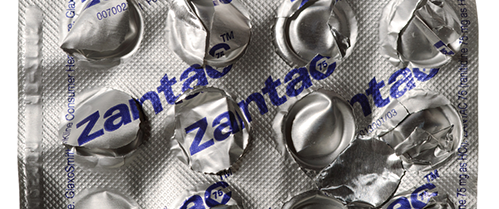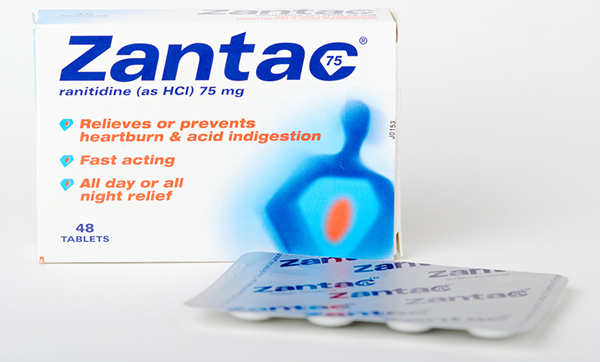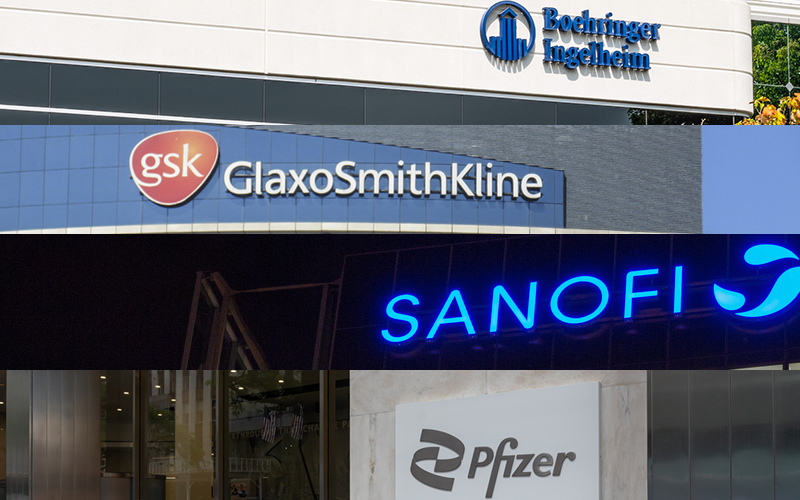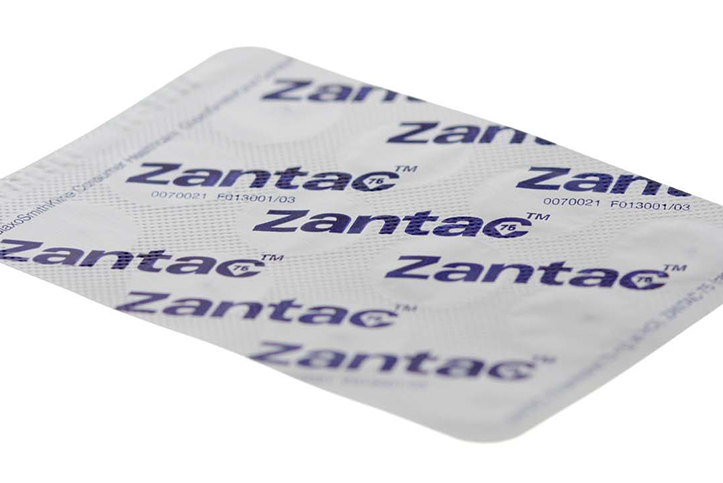
by manovermachine | Feb 23, 2023 | Zantac Linked Cancers
Last week Bloomberg Businessweek published a detailed report on the development of the heartburn drug Zantac, which revealed that Glaxo’s own scientists along with various independent researchers warned the company about the potential danger of the drug for years.
Thousands of pages of documents, many of which have never been made public, were reviewed by Bloomberg Businessweek. The documents show that the FDA considered the cancer risks when they approved ranitidine in 1982. Glaxo, however, had not shared a critical study at that time by a Glaxo scientist that found that when combined with various levels of nitrites, which are found in the human digestive system, high levels of the carcinogen N-Nitrosodimethylamine (NDMA) were produced. Scientist Richard Tanner’s report was not shared with the FDA, the associate director of clinical research in the US, or the senior medical adviser for gastrointestinal research. Glaxo now says that when testing lower levels of nitrite which are closer to conditions in an actual human stomach, Tanner did not find NDMA.
Storage Issues
Glaxo also “backed flawed research designed to minimize concerns and chose not to routinely transport and store the medication in ways that could have eased the problem.” It turned out that ranitidine wasn’t always stable. It is sensitive to heat and humidity, and when exposed to too much of either, it can degrade. This creates conditions for NDMA to form in the drug itself. Consequently, the product label included instructions to store the pills in a dry place that didn’t exceed 86 degrees Fahrenheit.
Fast Forward to 2019
It wasn’t until 2019 that ranitidine, both in Zantac and in generic brands, was found to be tainted with high levels of NDMA, a probable carcinogen, before being ingested. Valisure, a private lab operating independently of the FDA began testing and said it had found extremely high levels of NDMA in Zantac and several generic versions of ranitidine. The FDA then issued an alert but said it would conduct its own tests of ranitidine. Within a month, at least two dozen countries removed the drug from store shelves, and several makers of the drug acted on their own to stop the supply. This is what finally prompted the release of the Tanner report, which had been kept quiet since 1982.
In April 2020, the FDA forced makers of any version and any dose of ranitidine to stop producing and selling it altogether. They said that even under normal storage conditions, NDMA levels increased in ranitidine. The FDA had deemed that a tiny amount of NDMA, 96 nanograms, was an acceptable amount in any drug. But they eventually revealed that they had detected 357ng of NDMA in a cool mint version of ranitidine. And five months later, they detected 931ng of NDMA.
Where It Stands Today
Although ranitidine is no longer being manufactured or sold, the FDA holds that there are “no consistent signals” that Zantac increases cancer risk. They based this on a statement in a study examining NDMA levels in the urine of people who took ranitidine. The statement relied on seven papers by outside scientists who did find links between ranitidine and breast cancer, and raised concerns about liver cancer. The authors of the papers said they didn’t have enough data to confirm a link. This is what the FDA is basing its current position on, even though three studies since then have found a link between ranitidine and bladder and liver cancers, among others.
More than 70,000 people who took Zantac or the generic ranitidine are suing manufacturers in various US state courts. Boehringer, Pfizer, and Sanofi settled one patient’s case in December, for an undisclosed amount. GlaxoSmithKline may settle also. The manufacturers are facing years of lawsuits in California, Delaware, and other states with the possibility of billions of dollars in damages.
Meanwhile, Sanofi conducted an investigation into how NDMA formed in Zantac tablets. Their hope was to be able to tweak the drug so that it could be approved by the FDA. They were unable to find an acceptable way to make Zantac with ranitidine. Sanofi has instead reformulated an OTC heartburn medication using famotidine, the active ingredient in Pepcid. They’re calling it Zantac.

by manovermachine | Jan 26, 2023 | Zantac Linked Cancers
Zantac Lawsuits in New York Consolidated
More than 40 Zantac lawsuits pending in New York have been consolidated by New York’s Litigation Coordinating Panel on January 26. The plaintiffs in the lead case of Samuel v. Boehringer Ingelheim Pharmaceuticals Inc. et al filed a motion for coordination in October 2022, and in November the defendants filed their response, stating they do not oppose coordination of pretrial proceedings. Attorneys representing Samuel and other plaintiffs released a statement saying “We are pleased that there will be a mass litigation coordinated in New York to pursue our clients’ Zantac claims in light of the unfortunate MDL court’s actions. This is a welcome alternative.”
Jason T. Brown of Brown LLC, who represents other plaintiffs in the now-consolidated action, said Thursday, “We look forward to having the opportunity to proceed with representing alleged cancer victims of Zantac in the consolidated litigation so they can have their day in court in New York.”
++++++++++
Federal Lawsuits Against Zantac Dismissed by Judge, Lawsuits filed in state courts nationwide will go to trial in 2023
After a federal judge’s controversial decision to dismiss all federal Zantac lawsuits, plaintiffs have joined together to file their claims in Delaware state courts, where the lawsuits remain viable. The Multidistrict Litigation (MDL) judge excluded all of the plaintiffs’ expert witnesses and made his decision after finding that there was insufficient scientific evidence to establish that the recalled heartburn drug causes cancer under federal court system standards. As a result, all Zantac lawsuits pending in federal courts will be dismissed. Plaintiffs will likely appeal this decision. If the MDL judge’s decision to exclude plaintiffs’ expert testimony is reversed, claims may be reinstated and returned to the trial court.
State Court Zantac Lawsuits Continue
A complaint was filed last month in the Superior Court of the State of Delaware on behalf of 30 individuals against various makers of the drug, including GlaxoSmithKline, Pfizer, Boehringer Ingelheim, Sanofi-Aventis, Patheon Manufacturing Services, and DSM Pharmaceuticals, Inc.
The lawsuit states “Defendants were fully aware of the safety risks of Zantac, particularly the carcinogenic potential of Zantac as it transforms into NDMA within the chemical environment of the human body. Nonetheless, Defendants deliberately crafted their label, marketing, and promotion to mislead consumers.”
There are still approximately 50,000 Zantac lawsuits still pending in state courts nationwide. One bladder cancer lawsuit filed by James Goetz was expected to start in February 2023, however a settlement has been reached to resolve the case.
California state court Zantac trials are scheduled to go before juries in May, August, and October this year. Successful lawsuits will put pressure on the drug companies to negotiate settlements.

by manovermachine | Sep 26, 2022 | Zantac Linked Cancers
New Lawsuits Filed at the State Level
On September 14, law firm Baum Hedlund Aristei & Goldman filed 88 new lawsuits against GSK, Pfizer, Boehringer Ingelheim, and Sanofi in Delaware court on behalf of more than 7,000 claimants who allege that ranitidine heartburn products caused a variety of cancers.
And law firm Keller Postman filed claims on behalf of more than 10,000 clients from Delaware, California, Illinois, and Pennsylvania involving cancers no longer designated in the multi-district litigation created in 2020. The MDL now includes five types of cancer alleged to have been caused by ranitidine use—bladder, esophageal, gastrointestinal, liver, and pancreatic. Plaintiffs with breast, kidney, colorectal, prostate, and lung cancers are now pursuing their cases in state courts.
A Sanofi spokesperson said the recent surge in state court filings are due to plaintiffs who exited the federal multi-district litigation, or whose alleged injuries have been dropped from the MDL and reiterated their claim that there is no scientific evidence Zantac causes cancer.
Haleon Rejects Indemnification Requests
As reported by Reuters last week, London-based Haleon rejected indemnification requests from GSK (formerly GlaxoSmithKline plc) and Pfizer, with CEO Brian McNamara saying Haleon believes it is not liable for any claims that may arise from U.S. litigation over the heartburn drug, Zantac.
Zantac was originally marketed by a forerunner of GSK, and has been sold by several companies over the years, including Pfizer, Sanofi, Boehringer Ingelheim and many generic drugmakers.
In July, Haleon spun out of GSK as an independent company and comprises consumer health assets once owned by GSK and Pfizer. However Haleon has repeatedly said that it never marketed Zantac in any form in the United States, either as Haleon or GSK Consumer Healthcare.
Following a loss of market value due to uncertainty surrounding the litigation, McNamara wanted to make Haleon shareholders aware that they never agreed to accept a share of any liabilities if damages are accrued as a result of U.S. litigation over Zantac.
“We do not agree with Haleon’s position,” a GSK spokesperson said. “GSK believes that there are grounds for it to bring indemnification claims in respect of certain potential liabilities, including against Haleon.”
Pfizer was not immediately available for comment.

by manovermachine | Aug 18, 2022 | Zantac Linked Cancers
According to the National Institutes of Health, the heartburn preventative Zantac was approved for use in the United States in 1983 and by 1988 it had become the world’s best-selling drug. In 2004 generic ranitidine was approved for over-the-counter use in the U.S. and remained available until April 2020, when the FDA announced the withdrawal from the market of prescription, over-the-counter, and generic ranitidine and issued a warning to consumers. Nearly 15 million people were prescribed Zantac yearly prior to it being withdrawn from the market.
The active ingredient in Zantac is a substance called ranitidine and it works by decreasing the amount of acid your stomach makes. In 2018 ranitidine was found to have low levels of the known human carcinogen NDMA. N-nitrosodimethylamine is a stabilizing agent used in gasoline, rocket fuel, and other petroleum-based industrial products. The FDA found that the level of NDMA in ranitidine increased when the drug was stored in high temperatures and also as it got older.
Negative Effects of Zantac Use
According to the FDA, since 1983 there have been 73,240 cases reported with a negative effect from Zantac. This includes 55,891 serious cases, 4,926 deaths, and 66 percent of the cases were linked to cancer. In 2020 alone, however, reports of adverse reactions to Zantac spiked to 71,861. 70 percent of these reports mentioned cancers, the most common one being colorectal or colon cancer.
While the short-term risk of NDMA-caused cancer is thought to be low, there have not been full evaluations of longer-term exposure. However, Zantac and other ranitidine-based drugs have been linked to colorectal, kidney, bladder, prostate, esophageal, stomach, liver, pancreatic, lung, breast, gastrointestinal, uterine, testis, and thyroid cancers. Of the cancer deaths that were tied to taking Zantac, pancreatic cancer had the highest number of deaths, followed by liver, esophageal, colorectal, and stomach cancers.
Demographics of Zantac Injury
According to the FDA Adverse Event Reporting System (FAERS), 12,982 of the cases were reported by females, 8,437 cases were reported by males, but the majority of cases (51,821) did not specify gender.
Age was not specified in 39,002 cases. In the cases that did specify age, there were 19,027 reported cases in the 18-64 year range, 13,168 cases reported in the 65-85 year range, and all other age ranges had fewer than 1,000 cases reported.
Zantac-related cancers can take years to develop, so the serious adverse effects are not known in many cases for around four years.



